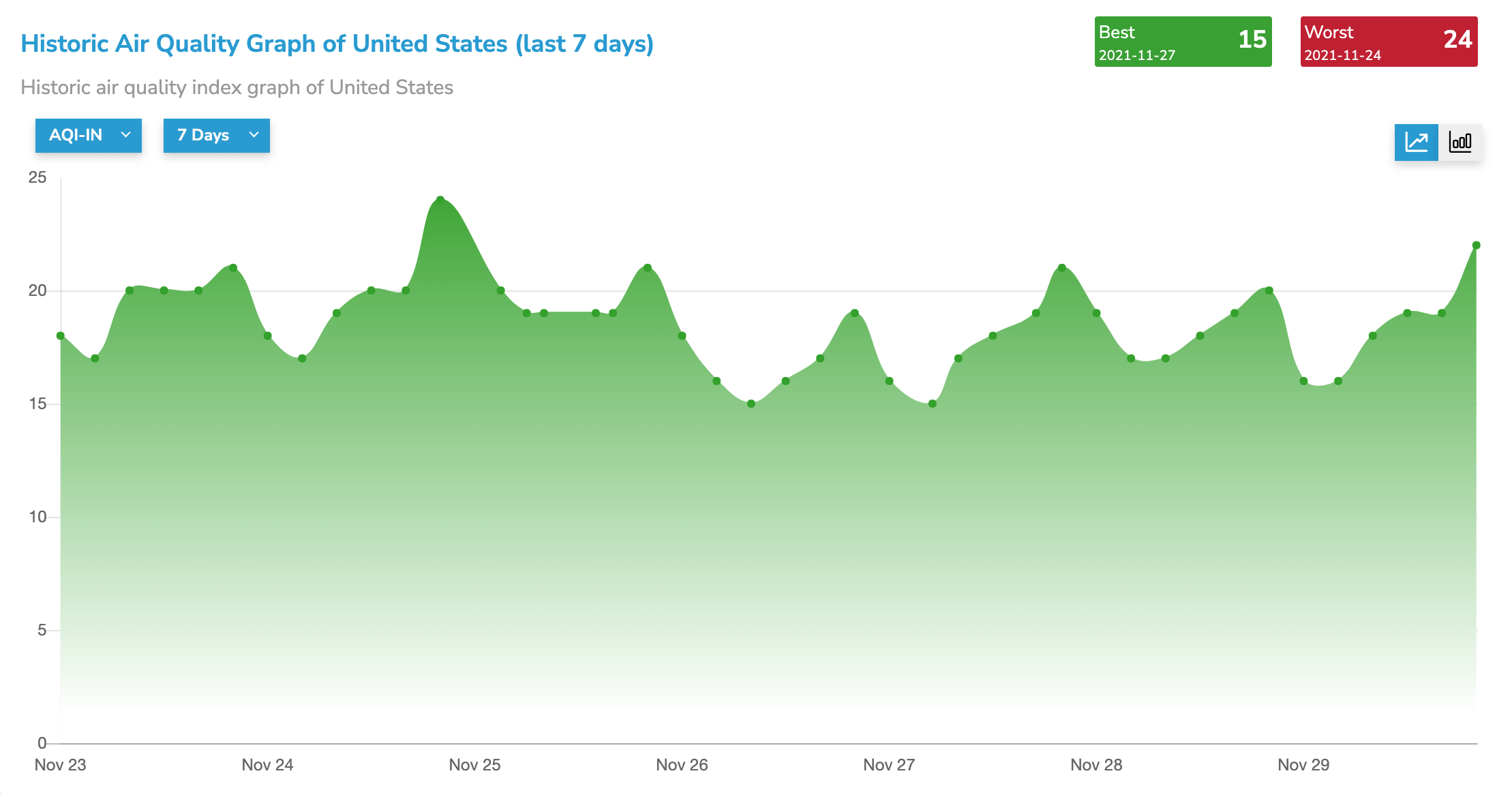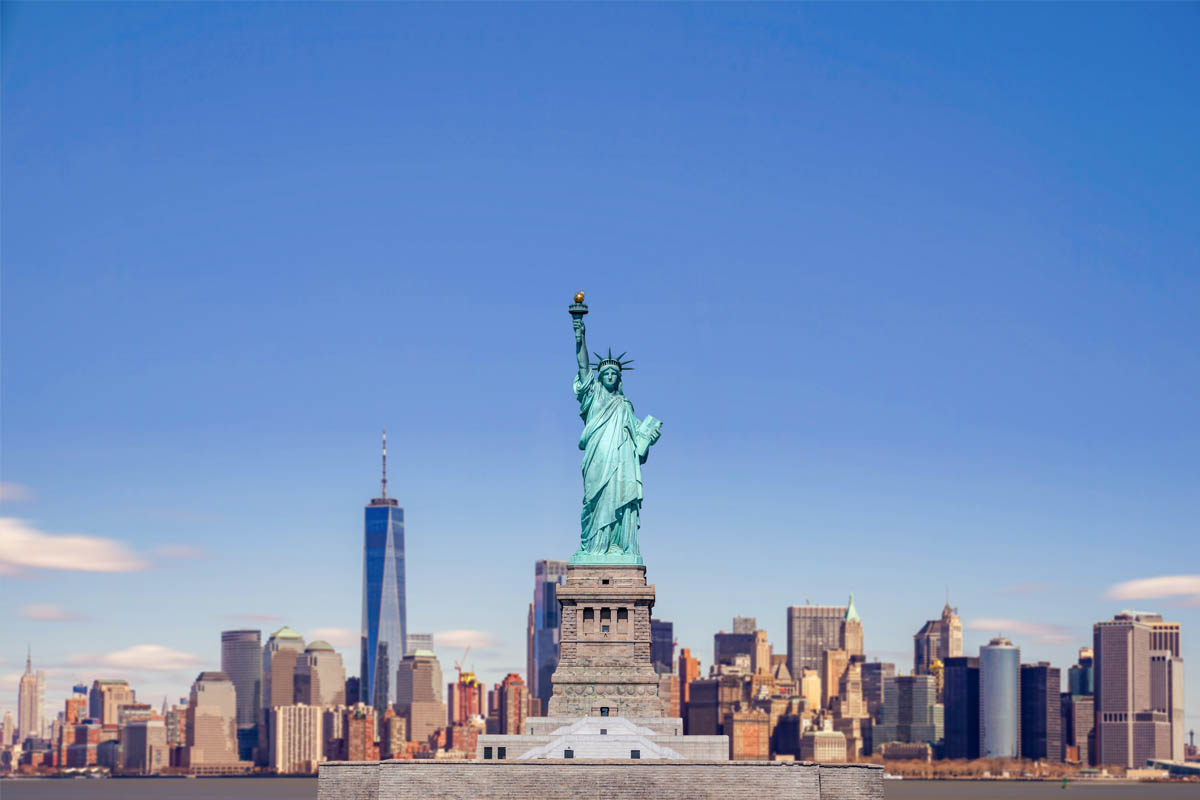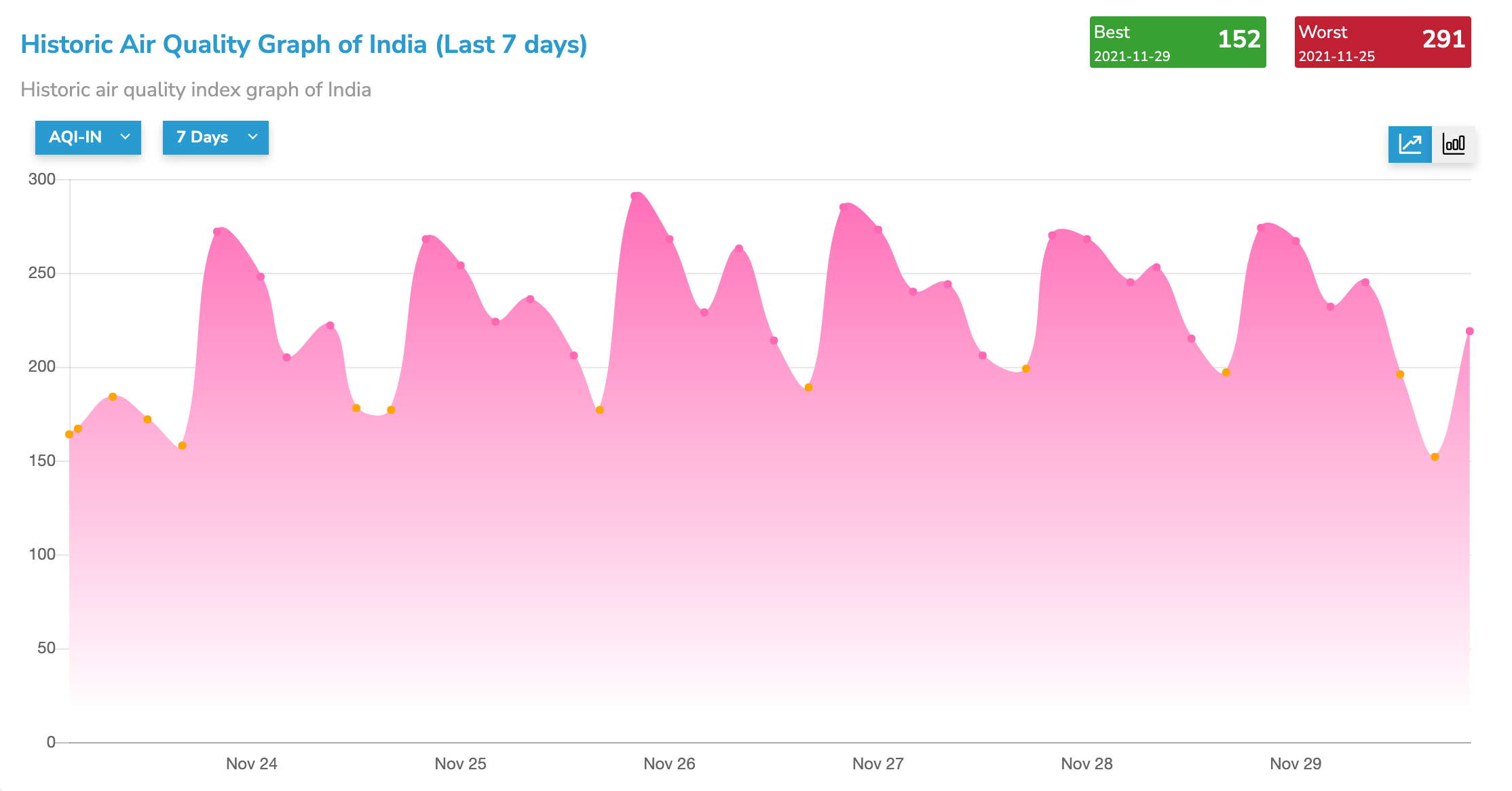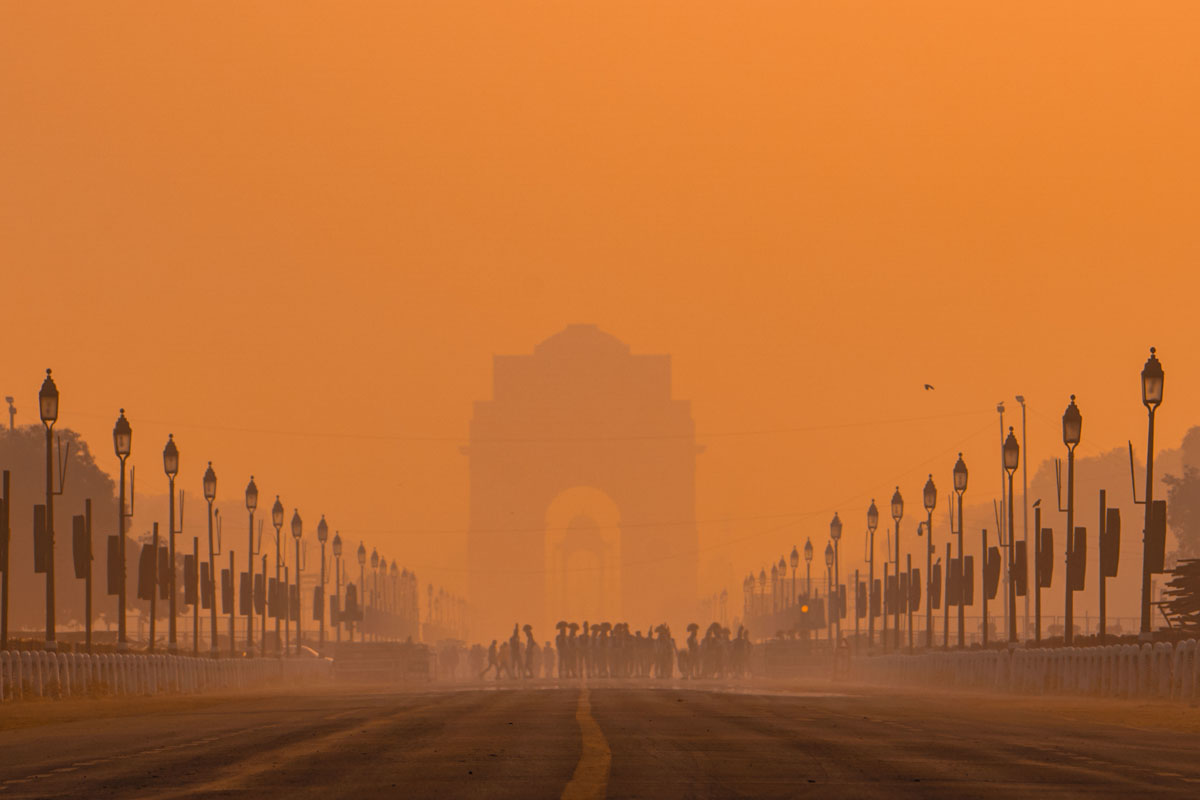According to the Lancet research, nine million people die each year as a result of pollution. That’s three times the number of people who die from AIDS, TB, and malaria combined.
Pollution has significant economic implications as well, accounting for between 4 and 5 percent of a country’s gross domestic product. Therefore, the poor bear a disproportionate share of the cost, with lower and middle-income nations accounting for 94 percent of all fatalities.
India and USA are two countries that have joind hand together a lot of times for greater goods. Combating Air Pollution is one of the battles that they have to fight too.
History of Pollution in USA
Donora, Pennsylvania, was engulfed in a deadly haze in October 1948. Nearly half of the town’s 14,000 people had serious respiratory or cardiovascular issues over the course of five days. Breathing was tough. The death toll had risen to over 40 people.
Across the country, air pollution had become a painful consequence of industrial progress. Moreover, people took notice and began to act, once tragedies like Donora’s were publicly publicised.
Since the commencement of the Industrial Revolution, air pollution has been a problem in the United States. Critics questioned the seriousness of the situation. Moreover, they argued that the proposed rules would hinder job growth and social progress.
Scientists began looking into the relationship between air pollution and health. States began enacting measures to limit pollution levels in the air. In 1970, Congress approved the Clean Air Act Amendments. Therefore, this paved the way for the nation’s air quality standards to be established.
US: Actions Taken By The US Government to fight Air Pollution
The United States Congress passed a succession of Clean Air Acts in the 1950s, 1970s, and 1990s. United States, various European nations, and the European Union followed these initiatives. The Clean Air Act establishes numerical limitations for a specific group of air pollutants, as well as reporting and enforcement methods.
These laws have had a very favourable impact. Between 1970 and 2006, inhabitants in the United States enjoyed the following decreases in yearly pollutant emissions:
- Carbon monoxide emissions decreased from 197 million to 89 million tonnes
- Nitrogen oxide emissions decreased from 27 million to 19 million tonnes
- Sulphur dioxide emissions decreased from 31 million to 15 million tonnes
- Particulate emissions decreased by 80%
- Lead emissions decreased by more than 98 percent
Results of the Clean Air Act
This long-term investment in improving air quality and protecting public health has paid off handsomely. Every dollar spent by the government to execute the Clean Air Act resulted in $30 in benefits. In all, the Clean Air Act had resulted in $2 trillion in benefits. Nearly all of this is connected to lives saved, illnesses prevented, and increased worker productivity. Furthermore, President Obama’s announcement of carbon controls saved thousands of lives and hundreds of thousands of asthma episodes by changing to clean energy.
In 2020, a study for the Natural Resources Defense Council predicted that:
- 370,000 premature deaths were averted
- 189,000 hospital admissions were avoided
- Net economic gains of up to $3.8 trillion (32 times the cost of the regulations)

History of Pollution in India
In India, air pollution is a major health concern. In 2019, India had 21 of the world’s 30 most polluted cities. Every year, 2 million Indians die prematurely as a result of air pollution. Emissions originate from automobiles and industry, but biomass burning for cooking is a major source of pollution in rural regions. In addition, large-scale crop residue burning in agriculture fields is a major source of smoke, haze, and particle pollution.
Primary Causes of Air Pollution In India
The primary causes of air pollution emissions and poor air quality are:
- Increasing urbanisation
- Growing industrialization
- Associated human activities
Over half of India’s PM 2.5 emissions are created in the upper atmosphere. This happens when different types of gaseous pollutants from one location combine with other gaseous pollutants from another area. In addition to that, agriculture, industry, power plants, residences, and transportation have a role in secondary PM 2.5 creation. This PM2.5 moves across states, cities spreading further and broader than primary PM2.5.
Irresponsible human conduct is a big issue that makes it harder to address the current issues. Moreover, the public’s lack of interest in pollution control measures are key roadblocks to achieving the aim of clean air. Due to a lack of public interest in some government actions, major investments in infrastructure assets are lost in fighting air pollution.

India: Actions Taken By the Indian Government to fight Air Pollution
The Central Government has launched the National Clean Air Programme (NCAP) under the Central Sector “Control of Pollution” Scheme. It is a long-term, time-bound national strategy to address the air pollution problem across the country.
- In 2018, the Central Government issued a Comprehensive Action Plan (CAP) that identifies dates and implementing agencies for activities outlined for air pollution prevention, control, and mitigation in Delhi and the NCR.
- The Graded Response Action Plan (GRAP) for the prevention, control, and abatement of air pollution in Delhi and the National Capital Region (NCR) was notified on January 12, 2017.
- It specifies graded responses and implementing agencies for four AQI categories: Moderate to Poor, Very Poor, Severe, and Severe + or Emergency.
Actions taken that directly affect the General Public
There have been several initiatives done to raise awareness among the general public. The following measures were taken:
- An app has been released, which provides public access to air quality data as well as the ability to file concerns about air pollution.
- Data on air quality is collected from a centralised place. After that, it informs all stakeholders about the current state of air quality in real time.
- A dedicated media section, as well as Twitter and Facebook profiles, have been established. This enables access to air quality-related information.
- The CPCB website is used to crowdsource new ideas, thoughts, and proposals from the public to increase efforts to improve air quality in Delhi-NCR.
- The Environment Education Awareness, and Training Scheme is being implemented with the goal of increasing environmental awareness across all segments of society. About one lakh schools have been designated as Eco-clubs under the Ministry’s National Green Corps (NGC) programme. Above all, about thirty lakh pupils actively engaged in different environmental protection and conservation initiatives.
- The Ministry is encouraging citizen participation and raising awareness about environmental conservation, with a focus on encouraging people to cycle, save water and electricity, plant trees, maintain vehicles properly, adhere to lane discipline, and reduce traffic congestion on roads by carpooling, among other things.
- Since October 7, 2019, 46 teams of the Central Pollution Control Board have been deployed to provide field input on air pollution activities in Delhi.

What can India learn from USA For Fighting Air Pollution
In India, we are at the same condition as the USA was in the 1960s. The issue is: Will we be able to recreate what the USA achieved in one generation? By the 2030s, will India’s rivers and towns be able to breathe again? The answer is a resounding no. For three crucial factors that set us apart from the rest of the world.
Where does India need to improve?
- Firstly, in India, pollution management has yet to become a political issue. India’s politicians just haven’t showed any significant interest in pollution reduction. In addition, they lack the courage to take on the big polluters, the corporate sector, which has demonstrated a complete lack of interest in pollution control. The government’s own businesses and power plants are significant pollutants. Small polluters, whether tiny-scale units or small taxidrivers/three-wheeler drivers, are not taken on by politicians since they are key vote banks. As a result, India’s democratic democracy is proven to be ineffective in fighting air pollution.
- Secondly, pollution prevention necessitates a great deal of self-discipline and efficient regulation. Given the current condition of political and bureaucratic corruption, it is highly improbable that pollution control regulations will be effectively implemented.
- Third, fighting air pollution would need significant expenditure. Given India’s per capita income is still significantly below that of USA in the 1950s, this investment is unlikely to be undertaken. Unless, of course, the government does a thorough examination of cost-effective methods. Preventative interventions are frequently less expensive than expensive curative measures. And he believes that all businesses, large and small, must fulfil certain basic criteria or face harsh fines.
Hope you enjoyed reading What can India learn from USA?: Fighting Air Pollution